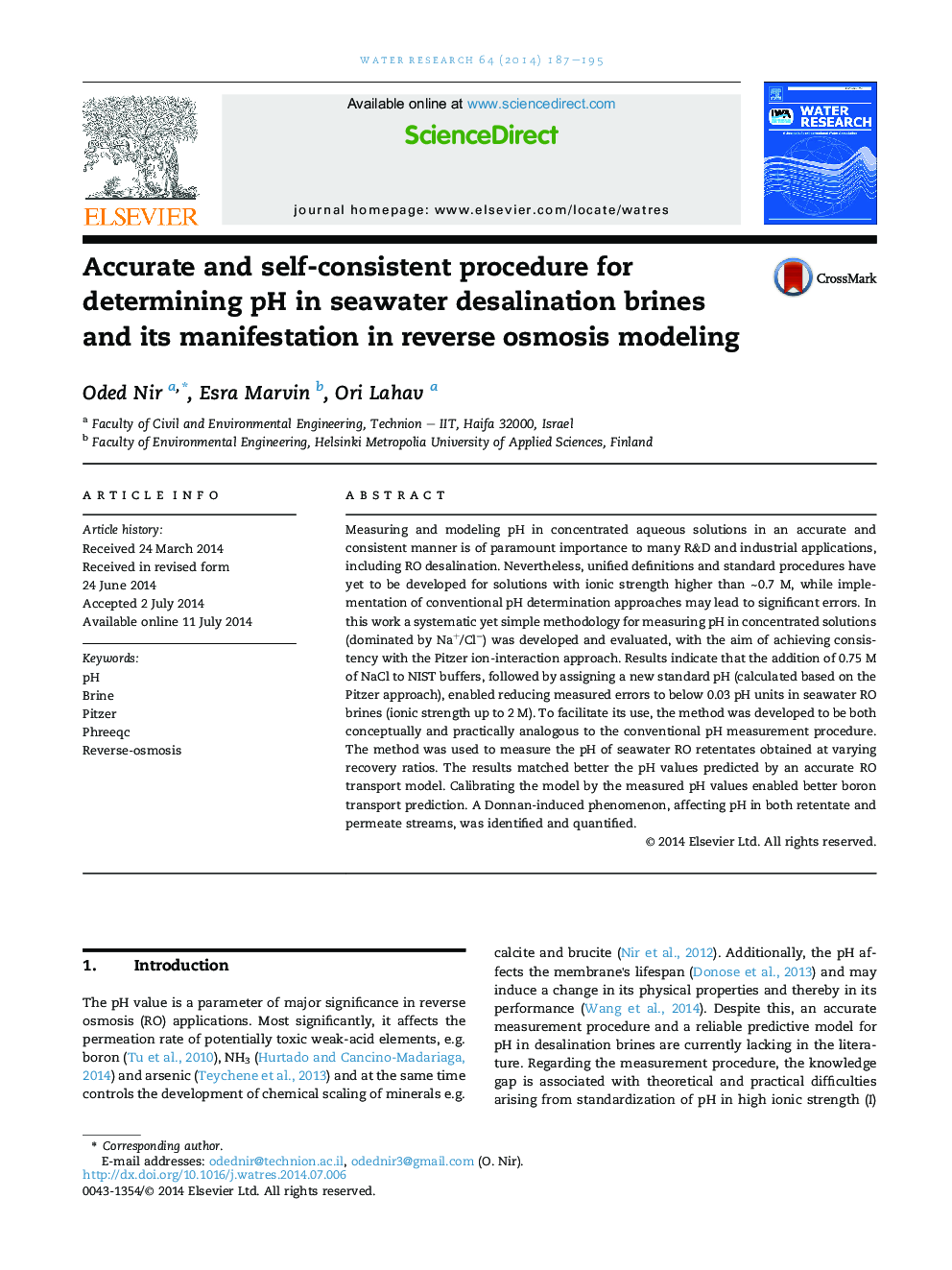| Article ID | Journal | Published Year | Pages | File Type |
|---|---|---|---|---|
| 4481441 | Water Research | 2014 | 9 Pages |
•An accurate method for determining pH in SW desalination brines was developed.•NIST + 0.75 M NaCl buffers, to which new standard pH is assigned by Pitzer, are used.•The method shows improved consistency and accuracy over standard pH measurement.•A set of three modified buffer standards covers wide pH and salinity ranges.•The new procedure enabled better calibration of a SWRO reactive-transport model.
Measuring and modeling pH in concentrated aqueous solutions in an accurate and consistent manner is of paramount importance to many R&D and industrial applications, including RO desalination. Nevertheless, unified definitions and standard procedures have yet to be developed for solutions with ionic strength higher than ∼0.7 M, while implementation of conventional pH determination approaches may lead to significant errors. In this work a systematic yet simple methodology for measuring pH in concentrated solutions (dominated by Na+/Cl−) was developed and evaluated, with the aim of achieving consistency with the Pitzer ion-interaction approach. Results indicate that the addition of 0.75 M of NaCl to NIST buffers, followed by assigning a new standard pH (calculated based on the Pitzer approach), enabled reducing measured errors to below 0.03 pH units in seawater RO brines (ionic strength up to 2 M). To facilitate its use, the method was developed to be both conceptually and practically analogous to the conventional pH measurement procedure. The method was used to measure the pH of seawater RO retentates obtained at varying recovery ratios. The results matched better the pH values predicted by an accurate RO transport model. Calibrating the model by the measured pH values enabled better boron transport prediction. A Donnan-induced phenomenon, affecting pH in both retentate and permeate streams, was identified and quantified.
Graphical abstractFigure optionsDownload full-size imageDownload high-quality image (336 K)Download as PowerPoint slide
